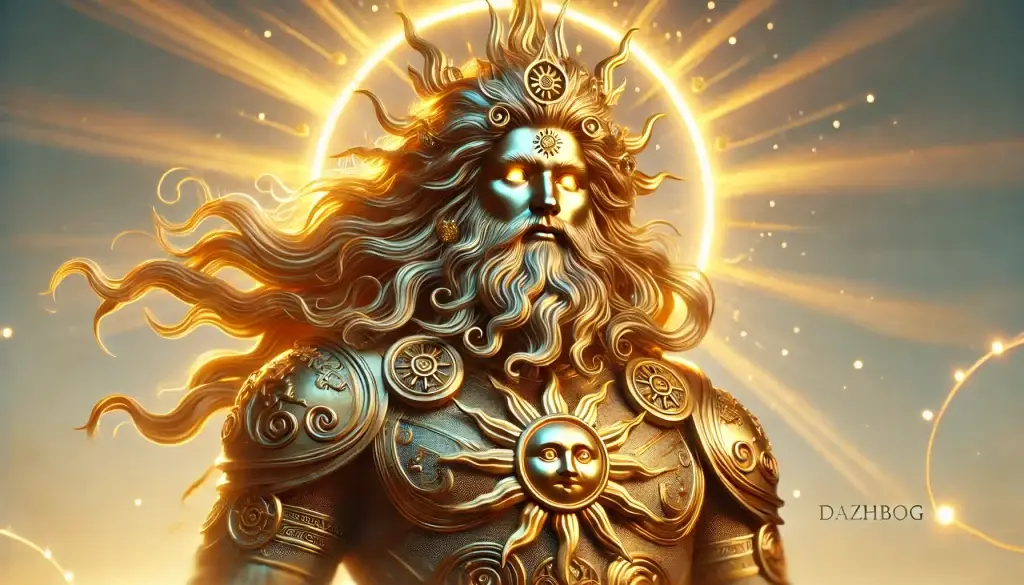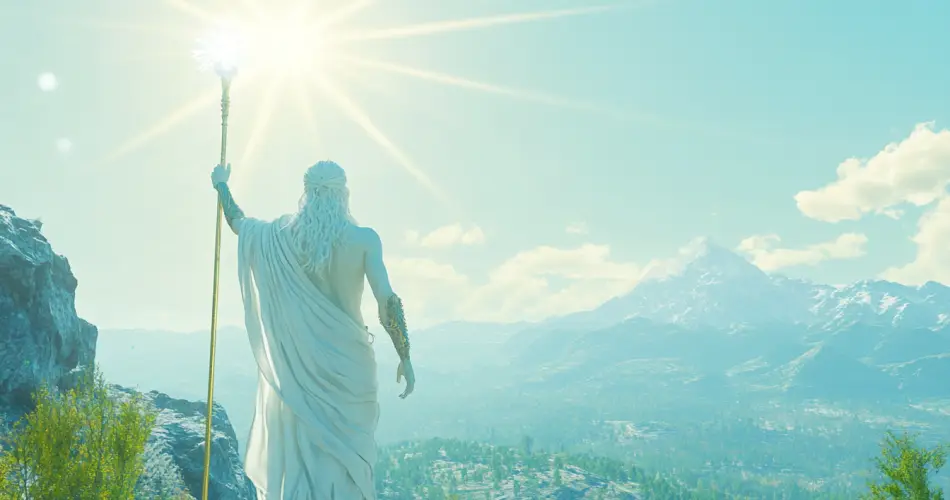Slavic mythology is packed with fascinating deities that shaped the culture and traditions of ancient Slavic communities. While these may be lesser known compared to Greek or Norse gods, their power and influence are undeniable.
In this post, we’re diving into seven of the most powerful gods and goddesses in Slavic mythology, each one with their own unique roles and captivating stories.
Key Takeaways
- The spread of Christianity among the Slavs led to the preservation of Pagan Slavic deities as Christian saints.
- Gods and goddesses in Slavic Mythology represented various parts of Nature and the environment. The gods were also highly polarized. There were deities for winter and summer, the sun and the moon, the sky and the underworld, etc.
- Deities in Slavic Mythology had human qualities and behaviour that made them so relatable to the Slavic people.
Read Also
7 interesting creatures and spirits from Slavic Mythology
Vrykolakas: Original Vampires from Greek mythology.
Perun – God of War

Perun is the Supreme god in several slavic societies. He was worshiped as the god of war, thunder, fertility, law, justice, and fire. He created all smaller deities and spirits, and they carry out their duties in his name.
Historic texts often described him as a man with a flowing white beard holding an arrow or sword. He was primarily worshipped by the aristocrats of the pre-Christian Slavic societies.
Perun is one of the few deities for which evidence of offerings can be found in all Slavic nations. To pray for a good harvest, the Slavs offer animal offerings such as bulls, oxen, or rams at the top of mountains or under ancient Oak trees associated with Perun.
Human sacrifices were also offered to perun to pray for victory during wars.
Interesting Facts about Perun
- Perun’s storms were believed to bring rain, which helped crops grow, making him a god of fertility and agriculture.
- Eagles, perched atop sacred trees, were seen as messengers or symbols of Perun. They represented his watch over the skies.
- Perun wields an Axe known as the Axe of Perun. Like the legendary hammer of Thor, Perun uses his axe in battle to create lightning and summon storms.
- Apart from the Axe, he is also believed to wield a mystical golden apple, which he uses to create powerful lightning bolts.
- The figure of Perun is preserved in Christianity in the form of Saint Elijah and Saint George.
Veles – Slavic god of the underworld.

Veles is the Slavic god of the underworld; he was also worshipped as the god of the Earth, water, and livestock. Also known as Volos, he protected livestock and blessed traders with success.
According to Slavic myths, Veles is Perun’s eternal enemy. This hostility is said to have started after Volos stole Perun’s cattle (wife in some accounts) and attempted to flee with it.
Although Veles was eventually defeated, the ancient Slavs believed the dry season was caused by the chaotic battle between Veles and Perun. The rain that followed after is a symbol of Perun’s victory over Veles.
After the Christianization of the Slavic region, Veles was absorbed into Christianity as Saint Vlas or Saint Blaise.
Interesting Facts about Veles
- Despite Veles reputation as a trickstar god, and the god of the underworld, he despises oath breakers and punishes them with diseases.
- Veles is associated with Loki in Norse Mythology and Hades in Greek mythology.
- Veles is the patron of travelling musicians, poets, and pottery. At wedding parties, music is usually delayed until the bridegroom has made a toast to Volos by pouring wine onto the ground.
- The Scarad tree of Veles is the Willow tree.
- With the spread of Christianity, Veles was associated with Siant Nicholas or the Devil.
Mokosh – Wife of Perun

Mokos is probably the most important goddess in Slavic mythology. She is believed to be the wife of the supreme god Perun.
Mokosh’s name means spring and wool. She is worshipped as the goddess of spring, fertility, sheep tendering, and the mother of the Earth. Mokosh is also the goddess in charge of spinning wool and mending clothes.
After the spread of Christianity among the Slavs, she was absorbed into the religion and replaced by the cult of the Virgin Mary and Saint Paraskeva Pyatnitsa.
Interesting Facts about Mokosh
- She is usually depicted as a woman with uplifted hands, flanked by two plough horses.
- Mokosh is still revered in Eastern Europe as a goddess of fertility and the protector of women.
Svarog – Slavic god of Fire

Svarog is a Slavic god of fire, blacksmiths and labourers. According to some Slavic stories, Svarog forged the sun in his celestial forge and created life on Earth. After the creation process, he fell into a deep sleep. It is believed that everything that happens on Earth is the direct manifestation of his dream.
According to Slavic mythology, Svarog is the god that passed the law of monogamy. He commanded that one man should have one wife and vice versa. Anyone who disobeyed any of his rules was sent to a burning furnace.
Interesting Facts about Svarog
- Svarog is similar to the Greek god of Blacksmiths Hephaestus and the finnish god Ilmarinen.
- The Symbol of Svarog is the Slavic svastika. The symbol represents a spinning wheel with eight prongs.
- In some stories, Svarog, not Perun, is the supreme god. He is believed to be the creator of all other gods. Some other legends say that Svarog is the same as Perun.
Dazhbog -Son of Svarog

Dazhbog is one of the few Slavic gods for which there is evidence of worship in all Slavic regions. He is believed to be the son of Svarog. His brother, Stribog, is worshipped as the god of cold and frost.
Dazhbog is depicted in wood, with a sliver head and a golden moustache. He is similar to the Greek deity Helios.
Interesting Facts about Dazhbog
- As the god associated with sunlight and harvest, Dazhbog is also viewed as a provider of prosperity, wealth, and abundance. His light was believed to ensure bountiful crops and good fortune.
- Dazhbog is sometimes associated with the moon in addition to the sun. In some stories, he is said to be the husband of the moon.
Belobog – God of the Light

Belobog is the Slavic god of light and the sun. His name translates to “White God.” Belobog is considered to be the direct opposite of Chernobog, who is believed to be the “Black God.”
Some say that Belobog only shows himself during the daylight hours and is, therefore, the god of travellers who lose their they. He is often portrayed as an old man with a white beard dressed in white robes. Another name for Belobog is Byelun.
Interesting Facts about Belobog
- In some Interpretations, Belobog provides the light that guides the spirit of the dead to the underworld.
- Belobog is also considered a bringer of good fortune and prosperity. He is often invoked at the beginning of summer when he is believed to be at his strongest.
- Unlike Chernobog, there are no ancient sources that mention Belobog. This has left historians to wonder if he actually existed in the Slavic pantheon.
Poludnitsa – Lady Midday

Also known as Polednica, Poludnica, or Prez-Poludnica. She is the goddess of the field, related to the Polevik field spirits. Unlike these spirits, Poludnitsa is not always evil. However, she likes to misguide travellers passing through the field.
The forest Leshy, Poludnitsa loves to make children get lost in corn fields. According to some stories, the goddess appears as a lovely woman dressed in white; she stops travellers and asks them questions.
If anyone fails to answer her question correctly or tries to change the subject, she will strike the person with a diseases.
Interesting Facts about Poludnitsa
- On hot summer days, she takes the form of whirling dust clouds and carries a frying pan, which she uses to block the crops from the scorching sun.
- She loves dancing, and if she sees a girl lying down to rest in the field, she will wake her up and persuade the girl to join her dancing until evening.
- Poludnitsa is blamed for causing heatstrokes, aches in the neck, and madness to those working in the field in the afternoon.
- Sometimes, she appears at night to teach people how to acquire magical powers.
